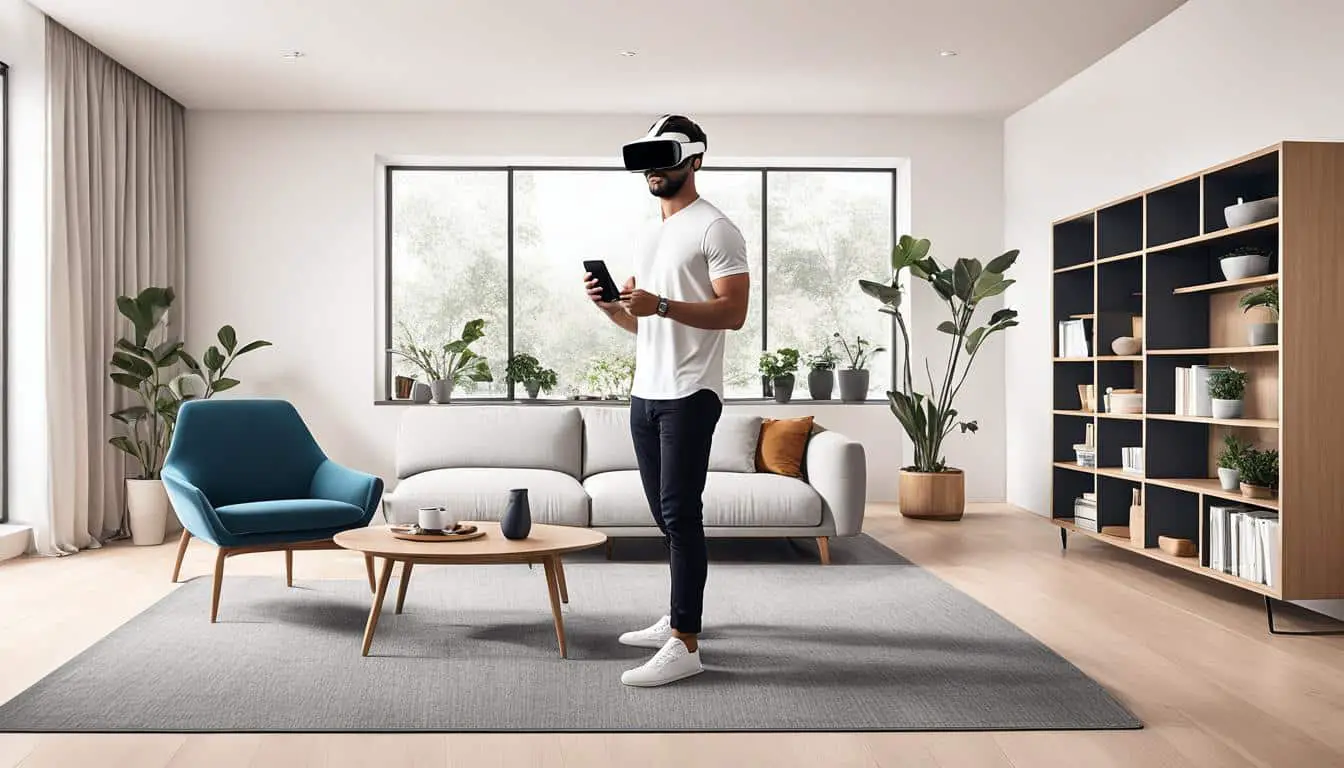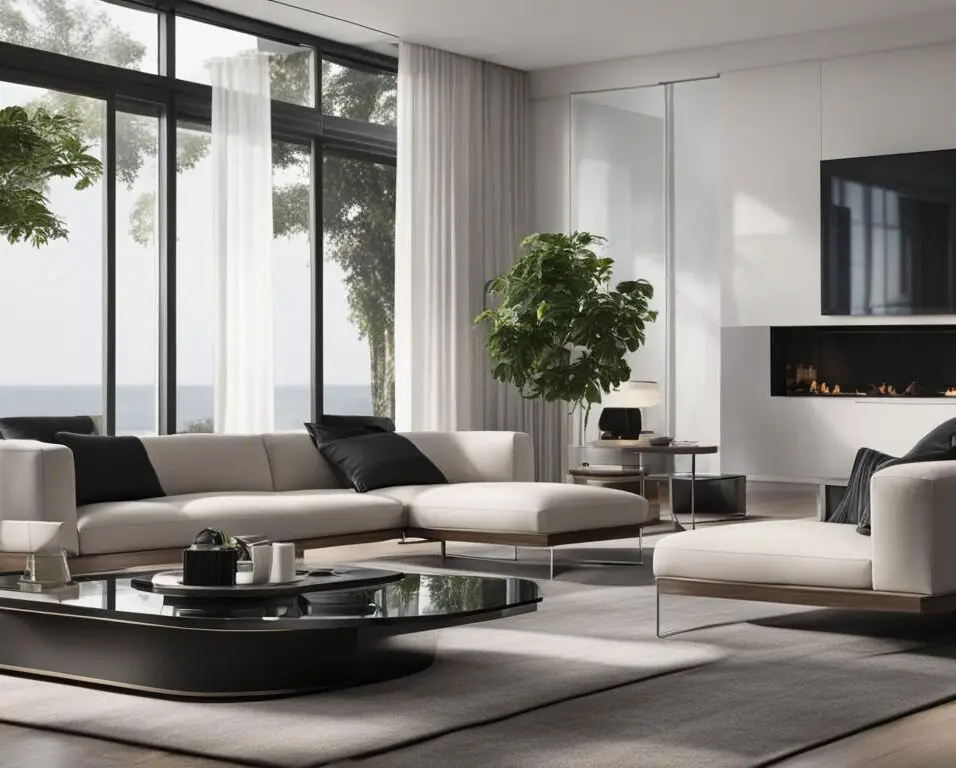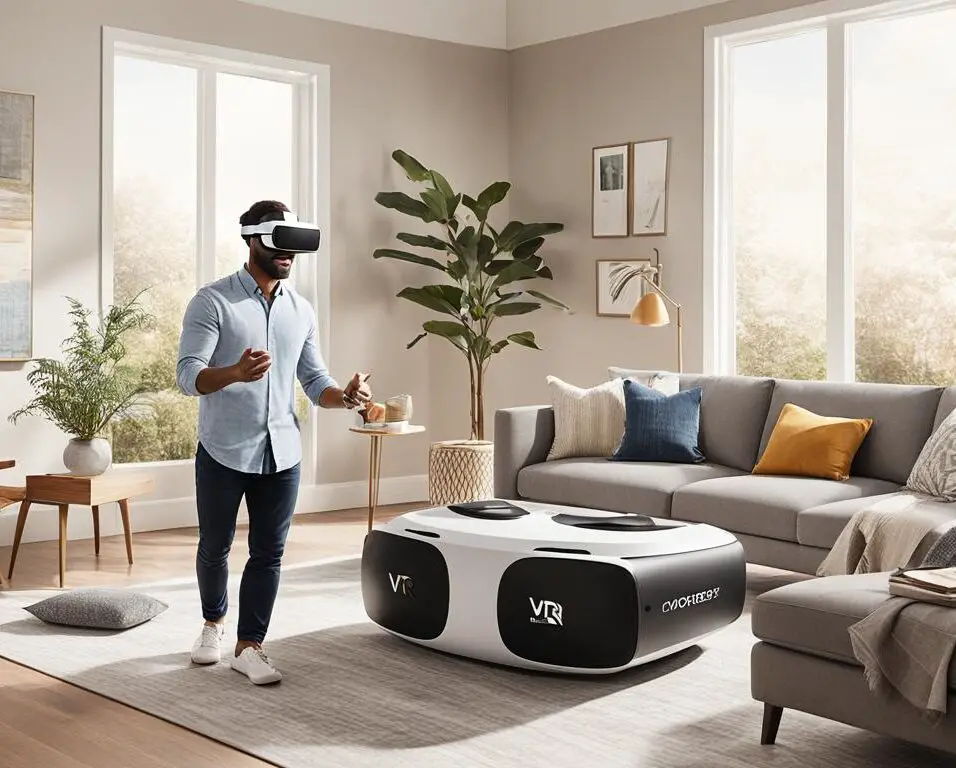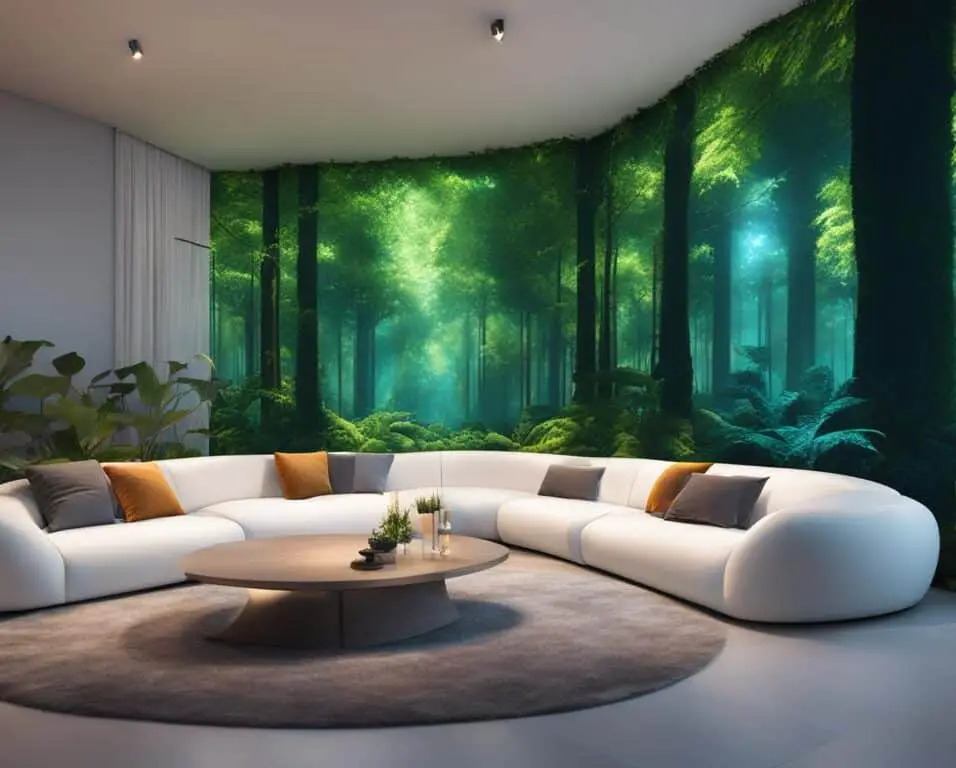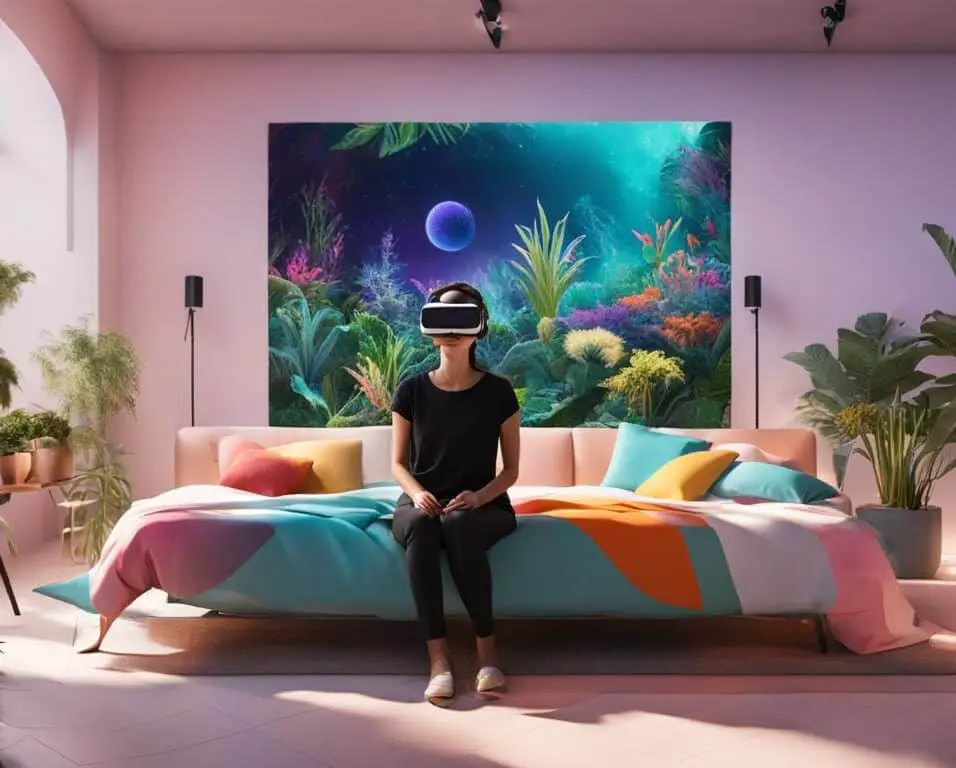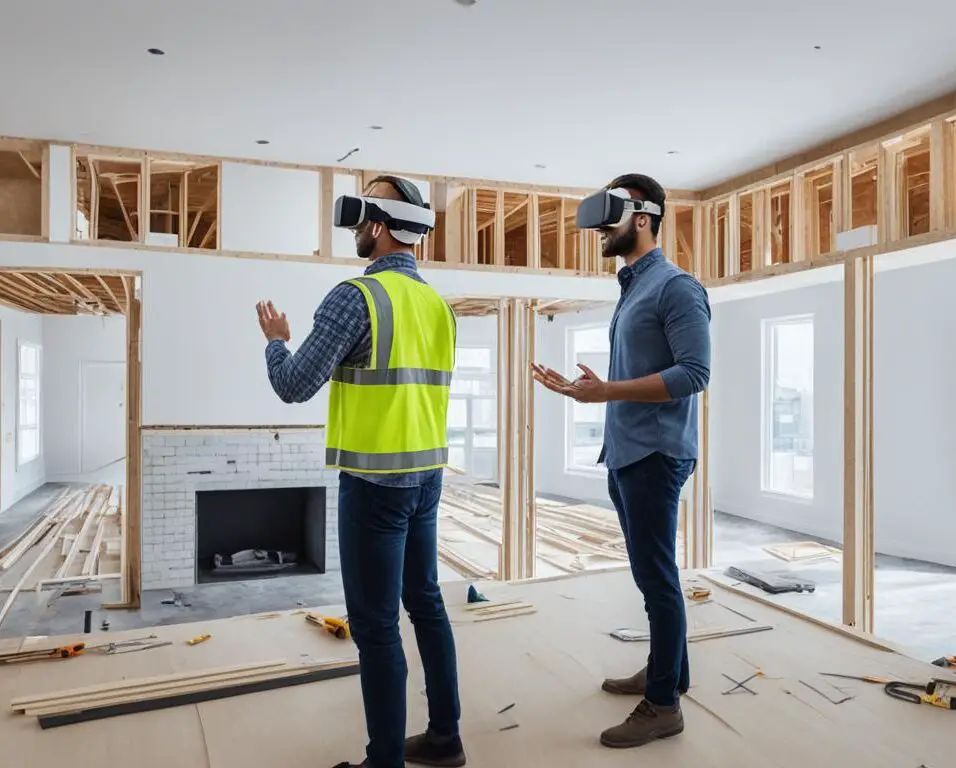Maximizing Space: Virtual Reality for Efficient Home Design
Virtual reality technology is revolutionizing the way homes are designed and optimized for space. By utilizing virtual reality tools and simulations, homeowners and designers can explore various layout options, furniture arrangements, and room configurations to create the most efficient and spacious living areas. This innovative approach to home design allows for better utilization of available space and helps homeowners make informed decisions about their interior design choices.
Key Takeaways:
- Virtual reality technology is transforming home design and space optimization.
- Virtual reality tools and simulations enable homeowners to explore different layout options and furniture arrangements.
- Virtual reality provides a realistic sense of scale and proportion, aiding in optimal space utilization.
- Virtual reality can accurately depict natural light conditions, helping homeowners maximize natural light in their homes.
- Virtual reality has practical applications in real estate, interior design, and personal home optimization.
Benefits of Virtual Reality for Space Optimization
Virtual reality brings numerous benefits to the table when it comes to optimizing space in homes. Through its innovative capabilities, homeowners can transform their residential areas into efficient and functional living spaces, maximizing every square foot. Let’s explore the advantages that virtual reality offers in terms of space optimization:
- Visualizing and Experiencing Future Living Spaces: Virtual reality enables homeowners to step into their future homes before any physical changes are made. By immersing themselves in a virtual representation of their living space, they gain a clear visualization of its layout and design, allowing them to identify potential flaws or inefficiencies that may hinder optimal space utilization.
- Enhancing Scale and Proportion: Achieving the right scale and proportion in interior design is crucial for effective space optimization. With virtual reality, homeowners can accurately perceive the size of their rooms, helping them plan furniture placement strategically. This ensures optimal flow within the space, maximizing both functionality and aesthetic appeal.
- Accurate Depiction of Natural Light Conditions: Natural light plays a pivotal role in creating an open and inviting atmosphere within a home. Virtual reality simulations can accurately depict natural light conditions, allowing homeowners to experiment with window placements and choose the optimal locations to maximize the influx of natural light. This has a significant impact on space perception, making the area feel more spacious and vibrant.
“Virtual reality enables homeowners to step into their future homes before any physical changes are made, identifying potential flaws or inefficiencies that may hinder optimal space utilization.”
By leveraging virtual reality, individuals can create living spaces that are both visually striking and functionally efficient. It empowers them to make informed decisions about their interior design choices, enhancing the overall quality of their living environment.
| Benefits of Virtual Reality for Space Optimization |
|---|
| 1. Visualizing and Experiencing Future Living Spaces |
| 2. Enhancing Scale and Proportion |
| 3. Accurate Depiction of Natural Light Conditions |
Virtual Reality Tools and Technologies for Space Optimization
Various virtual reality tools and technologies are available for space optimization in homes. These include immersive virtual reality headsets that allow users to experience a virtual representation of their home in a realistic and interactive manner. Design software with virtual reality integration enables users to make real-time changes to their home design and instantly see the impact on space utilization.
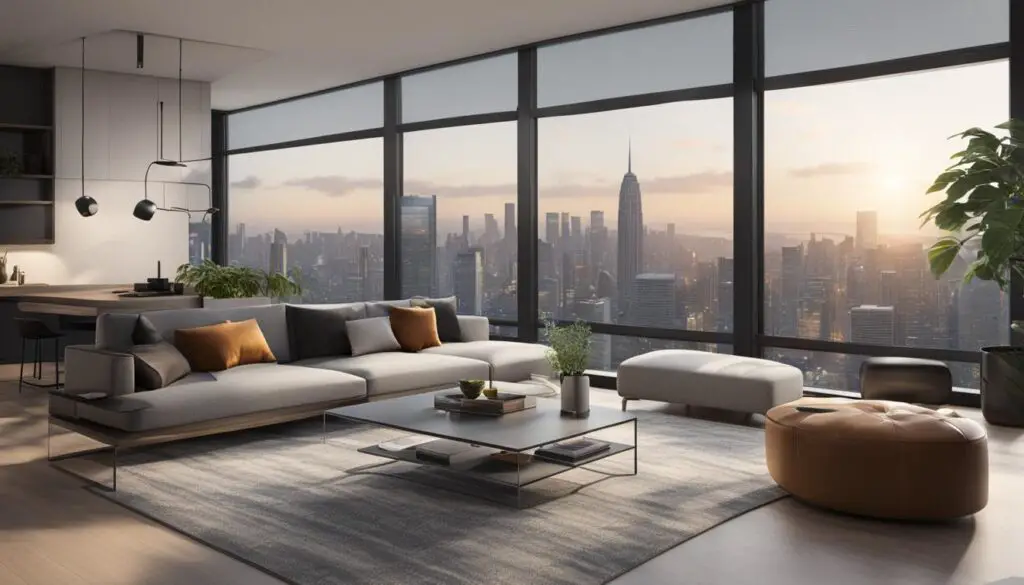
Augmented reality apps can also be used to overlay virtual furniture and objects onto a physical space, helping homeowners visualize how different elements will fit within the room. These tools and technologies empower homeowners and designers to explore, experiment, and optimize their living spaces in a virtual environment.
Table: Virtual Reality Tools and Technologies for Space Optimization
| Virtual Reality Tool/Technology | Description |
|---|---|
| Immersive Virtual Reality Headsets | Headsets that provide a realistic and interactive virtual experience of the home, allowing users to explore different design options and assess space utilization. |
| Design Software with Virtual Reality Integration | Software that enables real-time design changes and visualization of space optimization in a virtual environment. |
| Augmented Reality Apps | Apps that overlay virtual furniture and objects onto a physical space to help homeowners visualize and plan their room layout effectively. |
Using these tools and technologies, homeowners and designers can create virtual versions of their homes, experiment with different layouts, furniture arrangements, and room configurations, and make informed decisions about space optimization.
Real-Life Applications of Virtual Reality for Space Optimization
Virtual reality technology has revolutionized the way we approach space optimization in the real estate and interior design industries. Its practical applications have paved the way for more efficient home designs that maximize functionality and comfort.
“Virtual reality allows us to create immersive experiences that benefit real estate professionals, interior designers, and homeowners alike. It has become an invaluable tool in the industry, offering a new level of visualization and decision-making.”
Real estate professionals are leveraging virtual reality to create virtual property tours. This allows potential buyers to navigate through a lifelike representation of a home and assess its suitability for their needs even before physically visiting the property. By exploring every corner of the virtual home, buyers can make informed decisions and save valuable time.
Interior designers are also capitalizing on virtual reality to present their design concepts to clients. With virtual reality, they can provide an immersive experience, allowing clients to walk through their future space and experience the atmosphere and layout firsthand. This enables better decision-making and facilitates a more collaborative design process.
Moreover, virtual reality is empowering homeowners to optimize their own space. By using virtual reality tools, they can experiment with different furniture layouts, wall colors, and decor options without committing to physical changes. This gives them the freedom to explore various design possibilities and create a home that reflects their unique style and preferences.
Benefits of Virtual Reality in Space Optimization:
- Immersive experience: Virtual reality offers a realistic and immersive representation of homes, allowing users to explore and experience them as if they were physically present.
- Time and cost-saving: Virtual property tours eliminate the need for multiple physical visits, saving time and resources for both buyers and sellers. Interior designers can also streamline their design process by presenting concepts virtually, reducing the need for extensive in-person meetings.
- Enhanced decision-making: Virtual reality enables better decision-making by providing a realistic sense of scale and proportion. Clients can accurately visualize how furniture, colors, and other elements will fit within the space, ensuring optimal design choices.
- Flexibility and experimentation: Homeowners can use virtual reality to experiment with various design options, enabling them to find the perfect layout and decor that maximizes space and functionality.
Virtual reality’s real-life applications in space optimization are revolutionizing the way we design and perceive homes. Its ability to create immersive experiences, improve decision-making, and facilitate collaboration has made it an indispensable tool in the real estate and interior design industries.
| Real-Life Applications of Virtual Reality for Space Optimization | Benefits |
|---|---|
| Virtual property tours for potential buyers | Time and cost-saving |
| Design concept presentations for clients | Enhanced decision-making |
| Homeowners’ experimentation with layouts and decor | Flexibility and creativity |
As virtual reality technology continues to evolve, its impact on space optimization will only grow stronger. The ability to create immersive experiences will enhance communication between homeowners, real estate professionals, and interior designers, resulting in more efficient and visually appealing home designs.
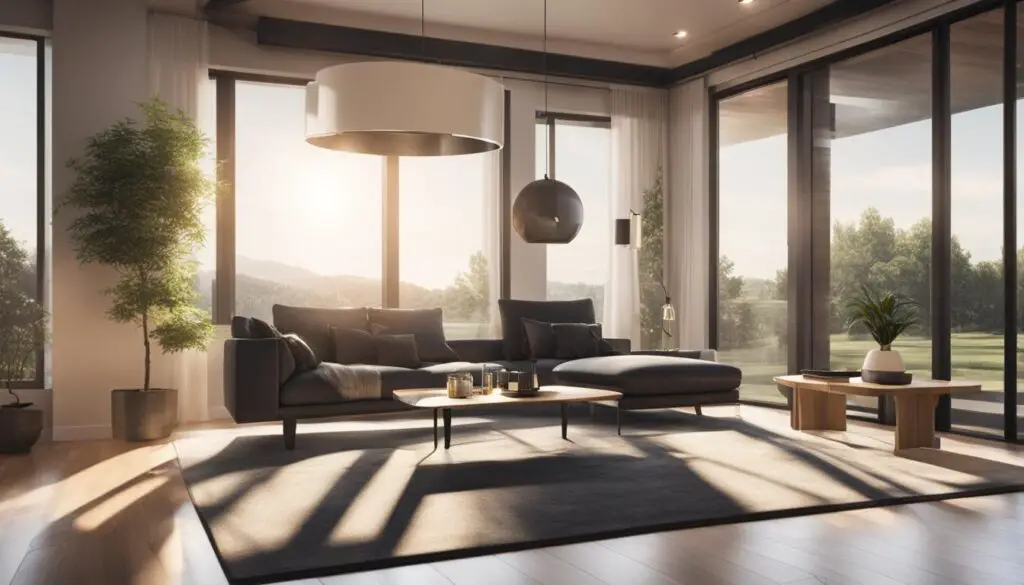
Future of Virtual Reality in Home Design and Space Optimization
The future of virtual reality in home design and space optimization looks promising. As the technology continues to advance, virtual reality tools and simulations will become more accessible and intuitive, allowing homeowners to easily create and explore their dream living spaces.
One possible advancement in virtual reality technology is the integration of artificial intelligence. By incorporating AI algorithms, virtual reality experiences can be enhanced with intelligent suggestions for optimal design solutions. These suggestions will be based on user preferences and space constraints, helping homeowners make informed decisions for efficient space optimization.
Furthermore, virtual reality applications are likely to expand from individual homes to entire neighborhoods or communities. This expansion will lead to collaborative space optimization and urban planning, where multiple stakeholders can virtually participate in designing and optimizing common spaces. This approach will ensure a cohesive and efficient use of space on a larger scale.
With ongoing innovation and advancement, virtual reality is poised to play a significant role in shaping the future of home design and space optimization. By providing immersive and interactive experiences, virtual reality empowers homeowners and designers to push boundaries, explore new possibilities, and create living spaces that are both aesthetically pleasing and functionally optimized.
Conclusion
Virtual reality has revolutionized the realm of home design and space optimization by providing immersive and interactive experiences. With the help of virtual reality tools and technologies, homeowners and designers can now visualize, experiment, and optimize living spaces, resulting in maximum efficiency and functionality. By simulating real-life conditions and offering a realistic sense of scale, virtual reality has transformed the way homes are designed and has empowered homeowners to make informed decisions about their interior design choices.
As virtual reality technology continues to evolve, it is expected to become an essential tool in the home design industry. The endless possibilities it offers for space optimization make it an invaluable asset for homeowners and designers alike. With the ability to virtually experience their future living spaces, homeowners can identify design flaws, inefficiencies, and areas that can be improved to maximize space utilization.
The integration of virtual reality with artificial intelligence has the potential to further enhance the space optimization process. By suggesting optimal design solutions based on user preferences and space constraints, virtual reality applications can make home design even more efficient and tailored to individual needs.
In conclusion, virtual reality has opened up a new world of possibilities for efficient home design and space optimization. Its ability to provide immersive experiences and realistic simulations has transformed the way homes are designed and has empowered homeowners to create the most functional and visually appealing spaces. As virtual reality technology continues to advance, we can expect it to play an increasingly significant role in the future of home design, offering endless opportunities for space optimization.
FAQ
How does virtual reality technology revolutionize home design and space optimization?
Virtual reality tools and simulations allow homeowners and designers to explore various layout options, furniture arrangements, and room configurations to create efficient and spacious living areas.
What are the benefits of using virtual reality for space optimization in homes?
Virtual reality allows homeowners to visualize and experience their future living spaces, identify design flaws, maximize space utilization, plan furniture placement, ensure optimal flow, and choose the right window placements for natural light optimization.
What virtual reality tools and technologies are available for space optimization in homes?
Various tools include immersive virtual reality headsets, design software with virtual reality integration, and augmented reality apps that overlay virtual furniture and objects onto physical space.
How is virtual reality applied in real estate and interior design for space optimization?
Real estate professionals use virtual property tours to allow potential buyers to navigate through a virtual representation of a home, while interior designers use virtual reality to present design concepts to clients for better decision-making. Homeowners can also use virtual reality to experiment with different furniture layouts and optimize their space.
What does the future hold for virtual reality in home design and space optimization?
As virtual reality technology advances, it will become more accessible and intuitive, integrating artificial intelligence to suggest optimal design solutions based on user preferences. Virtual reality applications may expand to include collaborative space optimization and urban planning.



